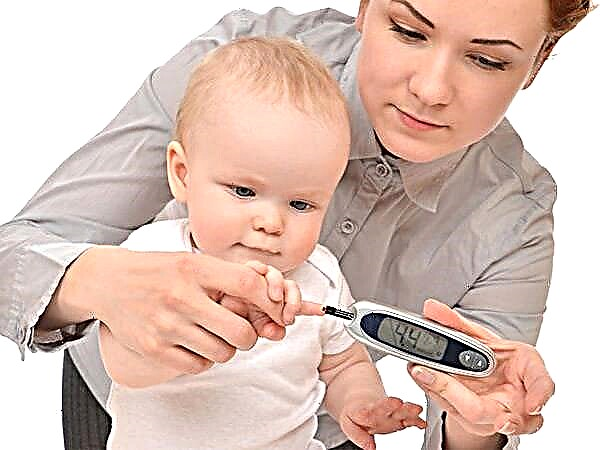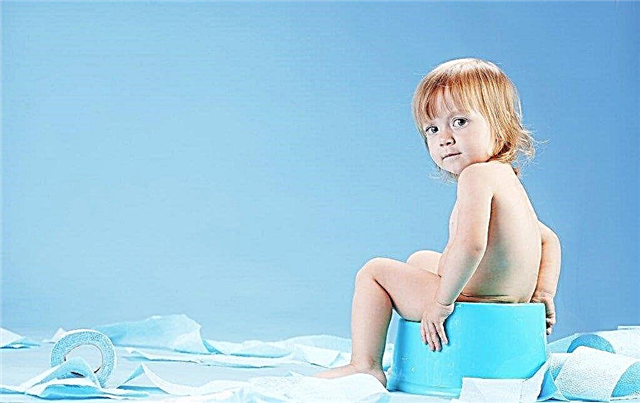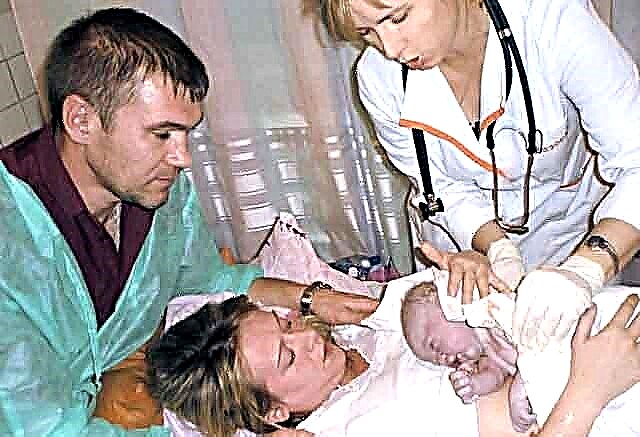The appearance of the first moles in newborns is a common and harmless phenomenon, because rarely does anyone come to this world with absolutely clean skin. The first moles in a child usually appear at birth or during the first 2 years of life.

Baby with a mole
Attention! Moles are dark spots that are located anywhere on the human skin. Their size can vary from a few millimeters to 10 cm or more.
Why moles appear
The reasons for the appearance of moles on a child's body can be:
- Genetic predisposition. If parents have a lot of age spots on their bodies, then their child will also have moles. The tendency to their appearance is formed during intrauterine development.
- Internal reasons. Against the background of hormonal changes in the body, moles in a child actively appear in the period from birth to 2 years and later, during puberty.
- External reasons. Long exposure to direct sunlight gives the body a reason for the formation of new moles.
When the first moles appear early in newborns, this is the norm. At birth, the baby is carefully examined by experienced doctors. The first period of an increase in the number of neoplasms occurs at the age of 6 to 18 months.
Recommendation. There is no need to be upset about every new mark. Although a large number of moles can lead to the formation of melanoma, with proper observation and medical examination, the risk of developing a skin disease is reduced to zero.
Types of moles
It is worth highlighting two main types of moles on the baby's body.
Vascular
The main sign of such formations is the accumulation of blood vessels in a certain place on the baby's body. Such nevi can be convex or flat, do not contain malignant cells and must be removed only for aesthetic purposes, their color varies from pale pink to bright red (even burgundy). This is an uncommon type of moles.
Subdivided into types:
- Hemangiomas. Such marks on the body are formed immediately at birth or before the age of 12 months. They take on various shapes, sizes and colors from light pink to dark blue. With growing up, it is possible for them to increase in size. Over time, they brighten and can disappear on their own by the age of 11-12.
Subspecies:
- Cavernous. It has a convex surface and a structure that is dense to the touch. The color is usually gray with a bluish tinge (may be purple or red), since the cause of the formation is a clot of vascular cavities connected by partitions.
- Strawberry. Bright red and soft bump to the touch. Rarely congenital, usually appears before the age of one year. It can be not only on the body, but also on the internal organs.
- Flaming nevus. It is often found in babies on the face and head, does not pose a danger, disappears by 10-12 months. The color is pink or red.
- Stork bite (wine stains). Such flat birthmarks usually have localization on the head, less often on the trunk and arms (legs). The cause is the expansion of the blood vessels. The spots grow at the same time as the baby. They can be in the form of a whole spot, or in the form of a cluster of small moles. They stand out for their bright salmon color, and can be quite dark. The shade does not change over time.
- Hanging mole (convex). This type of formation protrudes strongly above the surface of the baby's body. It is easy to injure it, so consultation with a doctor is necessary for removal. It is dark in color and can signal possible diseases of the pancreas or liver.
- Mongolian spot. In 90% of cases, it appears in children of the Mongoloid race, hence it has such a name. Congenital, large, flat, irregular, very similar to a bruise. Localization - back, hips, legs. It is more common in boys and disappears spontaneously by about 14-15 years. The main reason for the appearance is difficult childbirth.

Mongolian spot
Pigment
These are extremely rarely mutating, but common moles. They are multi-shaped spots with a varied color (from light pink to black), shape and places of manifestation. They are called common moles. The color of these nevi depends on the amount of melanin in the skin. A very common species, especially in infants. Not dangerous.
Council. If the number of moles on the body is more than 20, then it is imperative to show the baby to the doctor for consultation.
For reference. Melanocytes are specialized skin cells that produce melanin, which is responsible for skin color (pigmentation) and sunburn.
Also found in newborns "blue nevus" - a spot of blue or blue color, which can remain forever or go away on its own. Such spots need to be investigated in medical institutions.

Baby in a basket
Diagnostics of moles in newborns
In itself, the presence of moles in a person is quite natural, but they need to be paid attention and control. When a child has moles, parents are obliged to periodically carefully examine his entire body in order to analyze the behavior of the nevi already present on it and fix new ones.
Reasons for an emergency call to a specialist:
- Multiple nevi on the child's body (more than 10). A skin passport is compiled, in which the number and size of the largest formations and when moles appear on the child's body are recorded every 6 months.
- The disappearance of the skin pattern on the surface of the mole.
- Education rapidly decreases (increases) in size or changes color.
- The appearance of sores, itching, peeling, or burning.
- The growth of hairs from moles or the appearance of dots (stripes) on them.
- The mole began to bleed, or putrefaction appeared.
- Around her, hair falls out on the adjacent skin.
- In the immediate halo, a white spot or a red rim appears around.
- The nevus becomes glossy.
- Asymmetry, blurred boundaries, change in the shape of the growth.
At an appointment with a pediatric or oncological dermatologist, the level of danger of the changes occurring is determined, since only malignant neoplasms indicate mutations in this way. The most significant complication of changing moles is their transformation into melanoma (malignant tumor).
Attention! Any changes require urgent medical advice.
Diagnostic steps
Diagnosis of a nevus takes place in several stages:
- Collecting anamnesis includes asking parents about the history of the mole's “behavior”, how long ago it came from, and changes.
- Visual inspection of the entire body of the baby.
- Examination of a mole under a microscope and using a dematoscope;
- Taking a small piece of tissue next to the nevus for examination for histology;
- Delivery of blood, feces and urine tests.
On the basis of the collected data, the degree of danger (harmlessness) of the mole is determined and treatment or removal is prescribed.
When to remove moles
Attention! Removal of a mole from a child should be done only on the recommendation of doctors, after a qualified diagnosis and exclusively in a medical institution.

Doctor's office
Circumstances in which there are indications for the removal of a mole:
- On the recommendation of an oncologist in case of malignant formation.
- At the insistence of a pediatric dermatologist.
- If moles "spread" over the skin.
- When diagnosing dangerous species such as:
- Setton's nevus;
- fibroepithelial nevus;
- papillomatous nevus;
- atypical nevus;
- intradermal nevus;
- Mongolian spot (in rare cases).
- Mole injury (bleeding).
- Hanging nevi and growing in places dangerous for their injury.
- For aesthetic reasons (if the child has moles in places that spoil his appearance).
Removal methods
With the successful development of modern medicine, there are different ways to get rid of moles. The most commonly used are the following.
Surgical
This effective mini-operation for the destruction of deep and extensive nevi is performed by a surgeon with a scalpel in a hospital and under general anesthesia. This method is used infrequently, since it has a protracted rehabilitation period due to the duration of wound healing.
Laser
A painless and completely harmless method of getting rid of skin problems. Effective in the absence of pain, injury to healthy skin areas and speed (in one hour, complete elimination of formations is achieved).
Note. Other methods of removing moles are also successfully used: cryodestruction, electrocoagulation, radio wave removal and sclerotherapy.
Rehabilitation after removal
The word "operation" in this case should not frighten the relatives of the baby, but should be treated with all care and attention to the procedure.
Forbidden:
- wet the removal site (even use wet wipes);
- independently remove the crust formed at the healing site, since skin renewal begins under it.
Each doctor will give purely individual recommendations for caring for a baby during the rehabilitation period. The list may include: ointments, dusting powders, hydrogen peroxide, special plasters and medications. All regulations must be strictly followed.
Attention! In case of any, even insignificant, changes in the site of removal towards the worsening (itching, wetting, suppuration, etc.), you should consult a doctor.

A happy family
Prevention of neoplasms in children
Until the baby grows up enough to learn to observe the state of his body himself, this is the responsibility of his relatives.
A simple list of preventive measures will allow you to "arm" against the appearance of neoplasms in the future:
- The selection of clothes for the child must be correct in terms of freedom of fit to the body. If there are already birthmarks, then neither blouses nor pants should rub their places.
- Walking, especially in sunny and hot weather, should not be done from 10 am to 4 pm, when the sun is most active.
- In the summertime, it is advisable to apply baby sunscreen to protect the delicate skin of babies.
- After swimming in an open reservoir, wipe the entire body of children dry. water droplets act as a magnifying glass and can burn the skin.

Bathing in the bathroom in summer
The appearance of a little crumb in the family brings great joy. At the same time, hourly worries and constant worries appear. Careful observation of the baby's development, periodic examination by medical specialists and simple adherence to simple rules of care will allow you to enjoy parental happiness.



